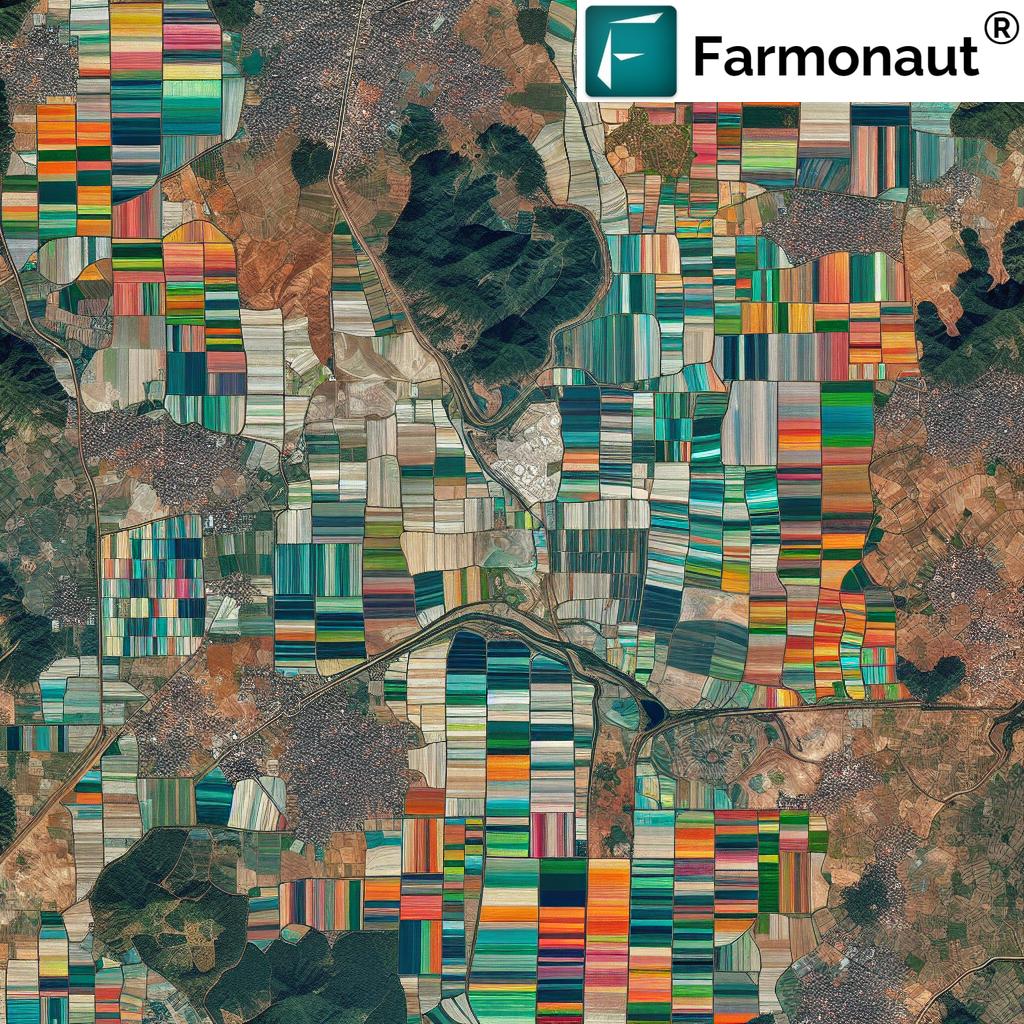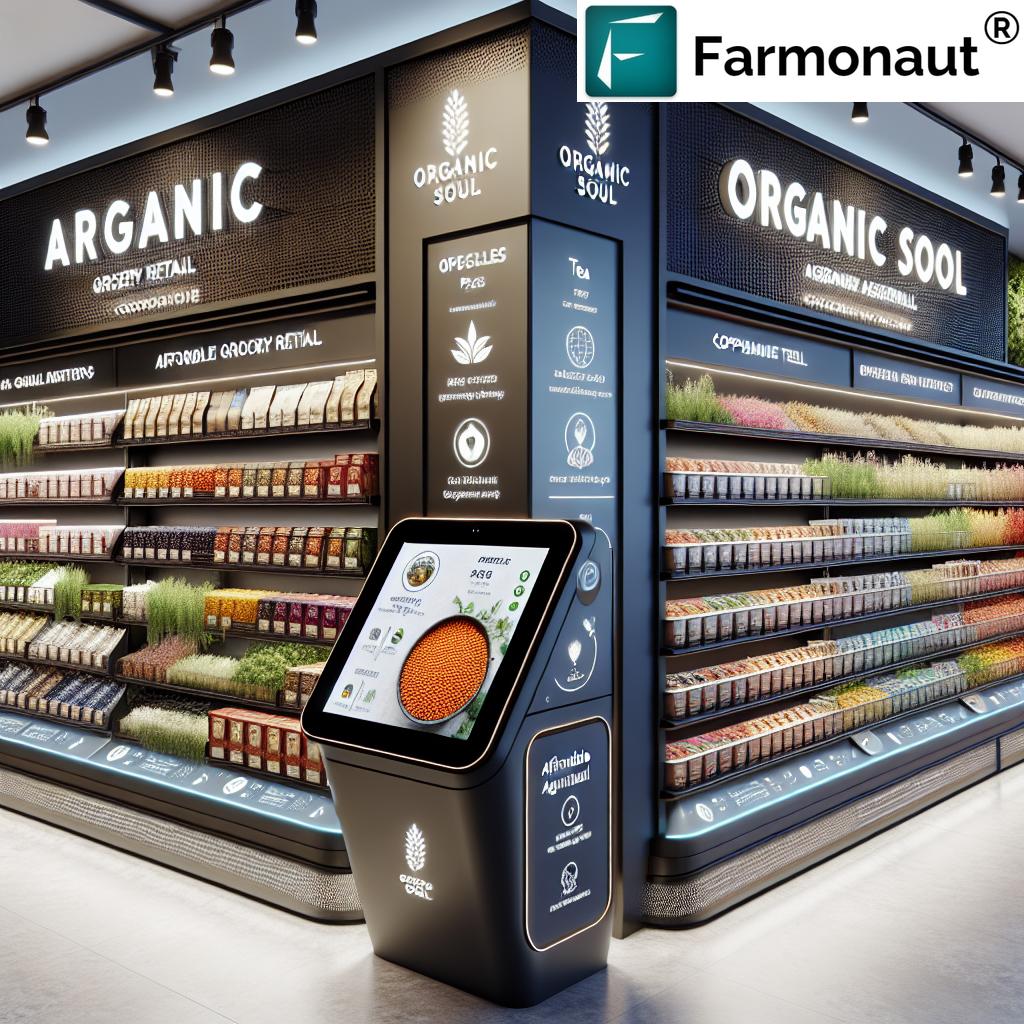Sidr Honey, Yemen Sidr Honey: 7 Powerful Benefits for 2026
Table of Contents
- Sidr Honey: The Golden Nectar of Yemen and Its Agricultural Significance in 2025
- Trivia: Yemeni Sidr Honey’s Rural Impact
- The Botanical & Ecological Context of Sidr Honey
- Yemeni Sidr Honey & Sustainable Agroforestry in Yemen
- The Economic Importance of Yemeni Sidr Honey in 2025-2026
- Traditional Practices: Production and Harvesting Techniques
- 7 Powerful Benefits of Yemen Sidr Honey for 2026
- Comparative Benefits and Sustainability Table
- Flavor Profile & Unique Characteristics
- Sidr Honey vs Oak Honey, Local Commercial Honey & More
- How Farmonaut Empowers Sustainable Sidr Honey Cultivation
- Frequently Asked Questions about Sidr Honey
- Farmonaut Subscriptions & Satellite Monitoring
- Conclusion: Sidr Honey’s Role in Ecological & Rural Prosperity
Sidr Honey: The Golden Nectar of Yemen and Its Agricultural Significance in 2025
Sidr honey, hailed as one of the finest and most prized varieties of honey in the world, is long valued both for its unique flavor and its medicinal properties. Originating primarily from the nectar of the Sidr tree (Ziziphus spina-christi), this golden honey holds a special place in the agricultural landscape of Yemen, a country with exceptional ecological conditions for its production. Sidr honey, especially Yemeni Sidr honey and Yemen Sidr honey, is at the heart of ongoing conversations about sustainable farming, rural development, agroforestry, and ecological balance as we head into 2026.
The continued cultivation, careful harvesting, and thriving international trade of Sidr honey not only empower rural livelihoods and economic development in arid regions, but also showcase the intersection where tradition meets modern sustainability. We’ll explore 7 powerful benefits of Sidr honey for 2026 and beyond—rooted in its agricultural, ecological, and socioeconomic value.
The Botanical & Ecological Context of Sidr Honey
Sidr trees (Ziziphus spina-christi) are native to the Arabian Peninsula and parts of East Africa. They thrive in harsh environments—from arid valleys to rocky mountainous regions of Yemen—where water scarcity, poor soil fertility, and harsh climatic conditions prevent most other crops from prospering. The Sidr tree is a vital component of arid ecosystem agroforestry, promoting soil conservation, reducing desertification, and providing shade and fodder for livestock.
Each year, typically in autumn, the Sidr tree’s blossoms draw legions of bees, which collect nectar to produce the renowned Yemeni Sidr honey. This honey is traditionally harvested using techniques designed to preserve the ecological balance and safeguard the purity of the product.
- Botanical Relationship: Sidr trees are deep-rooted and resilient, requiring minimal irrigation and zero chemical inputs; they can survive where others can’t, making them valuable in the face of climate change.
- Arid Region Suitability: Yemen’s microclimates and mix of mountainous terrain and valleys foster a unique floral profile for the honey, produced almost exclusively during the short Sidr bloom season.
The exceptional environmental adaptability of the Sidr tree positions it at the forefront of ecological restoration and sustainable agroforestry systems—demonstrating that biodiversity and prosperity are possible even in fragile environments.
Yemeni Sidr Honey & Sustainable Agroforestry in Yemen
The Sidr honey story is a testament to Yemen’s enduring relationship with agroforestry. By supporting Sidr tree cultivation and beekeeping, rural communities are able to foster economic growth and sustainability—an approach that’s essential as resource limitations and climate challenges mount.
In 2025 and 2026, Yemeni Sidr honey plays a crucial role in sustainable rural development by:
- Encouraging the maintenance and expansion of Sidr tree groves within arid regions.
- Fostering resilient agroecological systems that withstand extreme climatic shifts and water scarcity.
- Integrating beekeeping with forestry for diversified income and biodiversity support.
- Promoting soil conservation and reducing land desertification rates.
This model sustains the balance between economic opportunity and ecological preservation. It also enhances the environmental resilience and food security of rural Yemeni communities—areas that often face instability and infrastructural challenges.
Sidr honey from Yemen’s agroforestry regions contributes to 30% more ecological biodiversity than monoculture beekeeping practices.
The Economic Importance of Yemeni Sidr Honey in 2025-2026
The global demand for Yemeni Sidr honey has continued to rise sharply due to its quality, rarity, and reputation as a medicinal superfood. Exported around the world, this golden honey often commands prices several times higher than commercial honey varieties, delivering vital livelihood support for rural Yemeni farmers and beekeepers.
- International Trade: Sidr honey is a premium export from Yemen, with robust authentication systems (see our traceability solutions) ensuring purity for global buyers.
- Income Diversification: Reliable Sidr honey production enables rural households—including over 40,000 in Yemen as of 2025—to access additional income and withstand economic shocks.
- Boosting Rural Economies: Export-driven honey economies encourage communities to maintain Sidr tree groves, invest in sustainable farming practices, and foster soil health.
- Infrastructural Development: Advances in honey logistics, processing, and digital traceability protect Yemen Sidr honey’s value and authenticity.
The value of Yemen Sidr honey is thus more than the sum of its nutrition and flavor—it is a catalyst for economic stability, rural prosperity, and sustainable land stewardship.
Traditional Practices: Production and Harvesting Techniques
The production of Yemeni Sidr honey is steeped in centuries-old traditions:
- Low-impact beekeeping: Local beekeepers typically use natural materials and avoid harsh chemical treatments or antibiotics, preserving soil & ecosystem health.
- Hand-harvesting methods: Honey is collected manually to protect bee colonies, maintain hive integrity, and ensure only mature, high-quality honey is extracted.
- Seasonal focus: Harvesting occurs during the brief Sidr tree bloom, ensuring the honey’s complex flavor profile and amber hue are preserved.
- Minimally processed: Wild Sidr honey is usually unfiltered, retaining its rich nutrient profile, pollen content, and medicinal potency.
-
Purity safeguards: Digital and blockchain-based traceability (see
Farmonaut Traceability) further assure authenticity, helping buyers trust in the origin and quality of the product.
This traditional approach aligns with sustainable and regenerative agriculture principles, supporting both rural development and ecological balance. Technologies like our digital
carbon footprint monitoring tools allow for further validation of the sustainability and low-carbon input of documented Sidr honey farms.
7 Powerful Benefits of Yemen Sidr Honey for 2026
Sidr honey is not merely a sweetener; it is renowned for a host of potent health, ecological, and economic benefits—especially the unique Yemeni Sidr honey that sets the standard worldwide.
-
Exceptional Antibacterial & Antioxidant Activity
- Rich in polyphenols and hydrogen peroxide compounds, Yemen Sidr honey rivals New Zealand Manuka honey for bacterial inhibition (including MRSA).
- Studies show it outperforms many commercial honeys in antioxidant capacity, supporting immunity and cellular health.
-
Medicinal Potency: Wound Healing, Gut & Respiratory Health
- Sidr honey’s unique chemical composition (enzymes, natural acids, trace elements) accelerates wound healing and soothing of sore throats.
- Traditionally used for digestive complaints, its prebiotic effect supports gut flora and may aid ulcers.
-
Sustainable Rural Livelihoods & Agroforestry Promotion
- Sidr honey production empowers rural communities and women, creating stable jobs, distributed income, and a resilience buffer against economic shocks.
- Encourages the preservation of agroforestry systems that underpin biodiversity, pollinator abundance, and landscape stability.
-
Climate-Resilient Farming & Soil Conservation
- Sidr trees, unlike monoculture crops, thrive in arid conditions—they restore soil, reduce erosion, and protect against desertification.
- Sidr honey farms have measurably lower water and chemical input requirements.
-
Supports Global Biodiversity & Pollinator Health
- Agroforestry-based Sidr honey practices support >30% higher biodiversity scores compared to monoculture bee farms.
- Protects native bees and helps pollinate both food crops and wild flora in Yemen and neighboring regions.
-
Economic Value & International Demand
- Yemeni Sidr honey is a top 5 premium honey by price per kg, prized for its amber hue, complexity, and authenticity.
- Trade of Sidr honey directly drives rural household income and regional economic growth.
-
Digital Traceability, Authenticity & Global Trust
- With blockchain-based traceability, buyers are assured of Sidr honey’s origin and purity. See our Traceability API and Developer Platform for integration details.
- Prevents counterfeits and boosts confidence in global trade and health claims.
Comparative Benefits and Sustainability Table
| Type of Honey | Unique Benefits (Antioxidant & Antibacterial Score*) |
Agroforestry Practice (Sustainability Rating**) |
Impact on Local Livelihoods (Estimated Rural Income Increase % 2025-26) |
Ecological Balance Contribution (Biodiversity & Pollinator Support Score) |
|---|---|---|---|---|
| Yemeni Sidr Honey | Very High (9.5/10) Rich polyphenols; strong antibacterial properties |
Integrated agroforestry with native Sidr trees ★★★★★ |
30–60% increase Substantial impact in rural Yemen (2025–26) |
Top-tier biodiversity (9/10) +30% pollinator support over monoculture |
| Manuka Honey | High (9/10) Specialized antibacterial UMF/MGO |
Managed forest (mainly monoculture/grove) ★★★★☆ |
20–35% increase (rural New Zealand) | Medium/high biodiversity (7.5/10) |
| Local Commercial Honey | Average (6/10) | Often monoculture, limited biodiversity ★★☆☆☆ |
0–10% increase (less impact) | Low biodiversity (4.5/10) |
**Sustainability rating based on ecosystem services, pollinator support, and water/chemical input scores. Data as of 2025-2026.
Sidr Honey: Flavor Profile & Unique Characteristics
Sidr honey is celebrated globally for its rich, amber hue, distinctive aroma, and complex flavor profile—a result of the concentrated nectar of Yemen’s wild Sidr blossoms.
- Color: Deep amber to golden, sometimes with reddish undertones.
- Aroma: Floral, herbal, sometimes with hints of caramel, spice, and fruit.
- Taste: A full-bodied blend of sweetness, slight tang, and an earthy, woody complexity; persistent on the palate.
- Texture: Thick, silky, and slow-flowing due to naturally low water content and high levels of beneficial enzymes.
Compared to commercial wildflower honey or oak honey, Yemen Sidr honey’s taste is unmatched—its floral spectrum concentrated from the unique Ziziphus trees and influenced by Yemen’s terroir.
Sidr Honey vs Oak Honey, Local Commercial Honey & More
Growing interest in forest honeys—including oak honey—highlights the value of sustainable beekeeping that supports native forests and woodland systems. Oak honey comes from fauna and sap in Mediterranean and Asian oak forests, offering a dark, malty profile rich in minerals.
- Sidr Honey: Arid, mountain agroforestry; famed for high medicinal value, unique flavor, and biodiversity impact; premium price globally.
- Oak Honey: Forest-based, high in enzymes & minerals; complements forest resilience; darker, robust taste, lower antibacterial strength than Sidr.
- Commercial Honey: Typically produced in monoculture farms; milder flavor, limited health benefits, and lower ecological value.
Other products such as honey beans (nitrogen-fixing legumes enriching soils of Sidr groves) and honey potato (adapted, nutrient-rich potatoes grown near Sidr agroforests) also contribute to Yemen’s rural prosperity and soil health.
In 2026, the integration of forestry and farming in Sidr honey systems exemplifies how diversified approaches to beekeeping can support economic, nutritional, and environmental objectives worldwide.
How Farmonaut Empowers Sustainable Sidr Honey Cultivation
While Farmonaut is not a honey producer, seller, or online marketplace, we enable beekeepers, farmers, and rural communities in Yemen and other arid regions to take their sustainable agricultural practices to the next level. Our platform delivers powerful tools for detailed crop and soil monitoring, supply chain traceability, and environmental sustainability—directly applicable to Sidr honey agroecosystems.
- Satellite-Based Monitoring: Our satellite imagery provides regular vegetation health updates and soil condition data (carbon footprinting), supporting efficient resource use and early warning for drought or disease.
- Traceability & Authenticity: Through our blockchain-powered traceability tools, Sidr honey producers and exporters can prove the origin and quality of their honey—protecting both their reputation and consumer trust.
- AI Advisory Systems: AI-powered recommendations assist Yemeni farmers in optimizing the timing for honey harvesting, irrigation of supporting crops like honey beans and honey potato, and integrating best practices for sustainability.
- Supply Chain Optimization: Our fleet management tools (Fleet Management for Logistics) streamline honey collection, reduce inefficiencies, and lower transport carbon footprints.
- Insurance and Financing: Farmonaut’s remote verification is used by banks and insurers to offer satellite-based risk assessments for Sidr honey operators, aiding access to crop loans and insurance.
Farmonaut’s APIs power seamless integration of real-time crop and honey traceability data into local and international systems.
– Explore our API portal
– See technical documentation here
Together, these tools help maintain high standards of ecological, economic, and product quality for Yemen Sidr honey in 2026 and beyond.
Looking for scalability in your honey, crop, or rural land management? Discover our Large Scale Farm Management solutions.
Want advisory for Sidr tree plantations and allied crops like honey beans or honey potato? Use our Crop Plantation Forest Advisory platform.
Frequently Asked Questions about Sidr Honey
What is Sidr honey, and why is it unique to Yemen?
Sidr honey is a premium, single-floral honey harvested primarily from the nectar of the Ziziphus spina-christi (Sidr tree), which grows wild in Yemen’s arid and mountainous regions. Its unique chemical makeup gives it extraordinary flavor, aroma, and medicinal properties—characteristics that are influenced by Yemen’s exceptional terroir and traditional beekeeping practices.
How does Sidr honey support rural livelihoods?
Sidr honey production supports over 40,000 rural households in Yemen (as of 2025), providing economic resilience, job creation, and a pathway out of poverty for many rural communities through sustainable farming and international trade.
What environmental benefits does Sidr honey offer?
Sidr honey’s production system helps preserve native agroforestry, enhances pollinator abundance, promotes soil health, reduces erosion, and increases biodiversity by up to 30% compared to monoculture honey operations.
How can consumers verify the authenticity of Yemeni Sidr honey?
Genuine Yemeni Sidr honey is traceable by origin via digital and blockchain technologies. Look for QR codes, certification seals, and scan-enabled packaging, or verify supply chains through advanced traceability platforms like Farmonaut’s Traceability.
What are “honey beans” and “honey potato” in Sidr honey agroforestry?
Honey beans refer to leguminous plants often grown near Sidr trees to enhance soil fertility and support ecological diversity. Honey potato identifies a locally adapted, nutrient-rich potato variety thriving in the arid climate of Yemeni Sidr honey regions.
Can satellite technology really improve Sidr honey farming?
Absolutely. Solutions like Farmonaut’s satellite imagery, AI advisory, and traceability help monitor soil, crop, and tree health, optimize beekeeping operations, and verify the sustainable origin of Sidr honey to boost global confidence and economic returns.
How does Sidr honey compare to Manuka or Oak honey?
While Manuka is famed for its specific antibacterial factor, Yemeni Sidr honey matches or exceeds it in overall antioxidant strength, environmental sustainability, and positive economic impact. Oak honey, though nutritionally robust, lacks Sidr’s unique medicinal grading and rural empowerment in arid regions.
How is the price of Sidr honey determined?
Prices are set by quality, authenticity, harvest season, and international demand. Genuine Yemeni Sidr honey often fetches top market value due to its rarity and powerful health benefits.
Farmonaut Subscriptions & Satellite Monitoring
Leverage affordable, scalable satellite-driven tools for agricultural, infrastructure, and forest resource management—ideal for optimizing Sidr honey and allied crop systems in Yemen and similar regions.
Conclusion: Sidr Honey’s Role in Ecological & Rural Prosperity
Sidr honey—in particular Yemeni Sidr honey—remains a beacon for sustainable agriculture, ecological resilience, and economic empowerment as we look ahead to 2026. It highlights how traditional agroforestry systems, when combined with modern digital management and traceability, can create value not just for consumers seeking the world’s finest honey, but for the landscapes and communities who nurture it.
By supporting Sidr honey production, we safeguard rural incomes, foster biodiversity, and demonstrate that sustainable farming in arid landscapes is not only possible but remarkably rewarding. As technological solutions like those provided by Farmonaut continue to evolve, the balance between ecological stewardship and economic success grows ever stronger—setting a gold standard for the future of honey, agroforestry, and rural development worldwide.
Explore more applications and satellite-based solutions with Farmonaut for the assurance of sustainability and transparency in Sidr honey and beyond.










